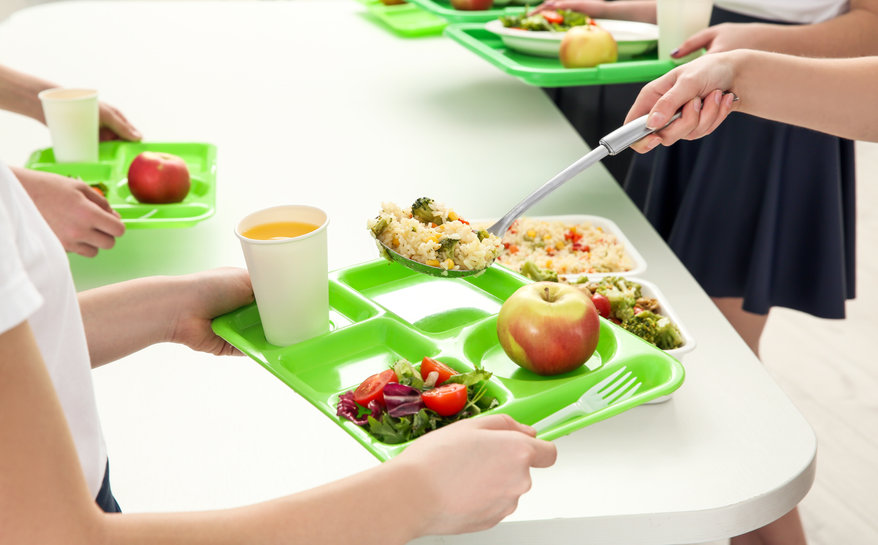You lovingly pack sandwiches, snacks, and fruit, only to find them untouched, traded, or tossed. So what gives? If your child keeps choosing school lunches over the meals you send from home, you’re not alone. Despite your best efforts to offer healthy, well-balanced options, the cafeteria might still be winning their hearts (and taste buds). Kids view lunchtime as more than just food—it’s a social, sensory, and emotional experience. Here are eight surprising reasons your kids may be choosing school lunches over your carefully packed alternatives—and what you can do about it.
1. They Want to Eat What Their Friends Are Eating
Lunchtime is social; most kids don’t want to feel like the odd one out. If their friends are all eating pizza, nachos, or chicken nuggets from the cafeteria, your quinoa salad or turkey wrap might not stand a chance. Kids crave belonging, and food can quickly become a part of group identity. Even if they like what’s in their lunchbox, they may feel self-conscious eating something different. Sometimes it’s not about the food—it’s about fitting in.
2. The School Menu Feels Like a Treat
School lunches often feature foods your kids aren’t allowed to have at home regularly. Think French toast sticks, chocolate milk, or cheesy breadsticks. When kids see those items on the menu, it can feel like a treat, even if the nutritional value isn’t ideal. The cafeteria sometimes serves up comfort food that hits a nostalgic sweet spot, especially if you limit sugar or processed foods at home. That novelty alone can make school lunch more appealing than your well-balanced Bento box.
3. Variety Beats Repetition
Let’s be honest—most of us fall into lunch-packing routines that involve rotating the same few items. Peanut butter sandwiches, cheese sticks, and baby carrots can get old fast. Meanwhile, the school lunch menu offers variety, even if it’s not always healthy. Tacos on Tuesday, pasta on Wednesday, and breakfast for lunch on Friday? That’s exciting in kid terms. Mixing things up at home—even once a week—can make your packed lunches feel fresher and more fun.
4. They Don’t Like the Temperature or Texture of Packed Food
That lovingly packed grilled cheese is cold when lunch rolls around, and the apple slices might be brown. Many kids are sensitive to food texture and temperature, and what was delicious at 7:30 a.m. just doesn’t hold up by noon. School lunches are often served hot, and cafeteria staff are trained to present food in a way that’s more appealing at the moment it’s eaten. Consider using a thermos for warm options or packing frozen fruit that thaws by lunchtime. A little temperature control can make a big difference.
5. They Want to Feel Independent
When kids choose school lunch, it’s one of the few daily decisions they get to make entirely on their own. It gives them a sense of independence and control, especially in environments where rules dominate most of the day. Choosing a meal—even from a limited menu—can feel empowering. While you might feel frustrated by their choice, honoring their input can go a long way. Involve them in planning and packing lunch at home so they feel more ownership over the meal.
6. Packaging and Presentation Matter
School lunches are usually served on trays or in neatly organized compartments, and that structure makes food more visually appealing. If your packed lunch looks squished, soggy, or all shoved together, it may not get the attention it deserves. Kids often eat with their eyes first, and presentation counts—even at age eight. Investing in a quality lunchbox with separate compartments or colorful silicone cups can make a homemade meal look more fun and appetizing. The better it looks, the more likely they’ll eat it.
7. The Cafeteria Has More Options for Picky Eaters
Picky eaters love the ability to pick and choose. Cafeterias often have options for customizing meals—choosing fruit instead of veggies, skipping a side, or doubling up on their favorite part. That flexibility can feel more appealing than a pre-packed lunch that they have no say in. If your child tends to skip most of their packed lunch, it could be a sign they want more control over what goes in it. Offering them a few build-your-own lunch components can mimic the cafeteria experience positively.
8. There’s Less Pressure and More Fun
Sometimes, eating a packed lunch feels like an extension of home routines and parental expectations. School lunch, on the other hand, feels casual and carefree. No one’s watching to see if they eat their vegetables or finish their sandwich. This mental break can make the whole meal more enjoyable for your child. Reducing pressure around packed lunches and making room for flexibility may help even the playing field.
Packed Lunches Can Compete—If You Get Strategic
It’s not about beating the cafeteria—it’s about making home-packed meals feel just as fun, satisfying, and empowering. With a few tweaks—more variety, better presentation, and a little input from your child—you can turn their lunchbox into something they actually look forward to. And even if they choose the school lunch once in a while, that’s okay too. What matters most is fueling them with food they’ll eat and enjoy, wherever it comes from. Keep it creative and light, and involve them in the process.
Do your kids prefer school lunches or packed ones, and what tips have helped you make your lunches more appealing? Share your ideas in the comments!
Read More:
School Success Starts at Home—Here’s How to Prep Your Kids
5 Ways to Help Change a Child’s Bad Behavior at School
Catherine is a tech-savvy writer who has focused on the personal finance space for more than eight years. She has a Bachelor’s in Information Technology and enjoys showcasing how tech can simplify everyday personal finance tasks like budgeting, spending tracking, and planning for the future. Additionally, she’s explored the ins and outs of the world of side hustles and loves to share what she’s learned along the way. When she’s not working, you can find her relaxing at home in the Pacific Northwest with her two cats or enjoying a cup of coffee at her neighborhood cafe.





